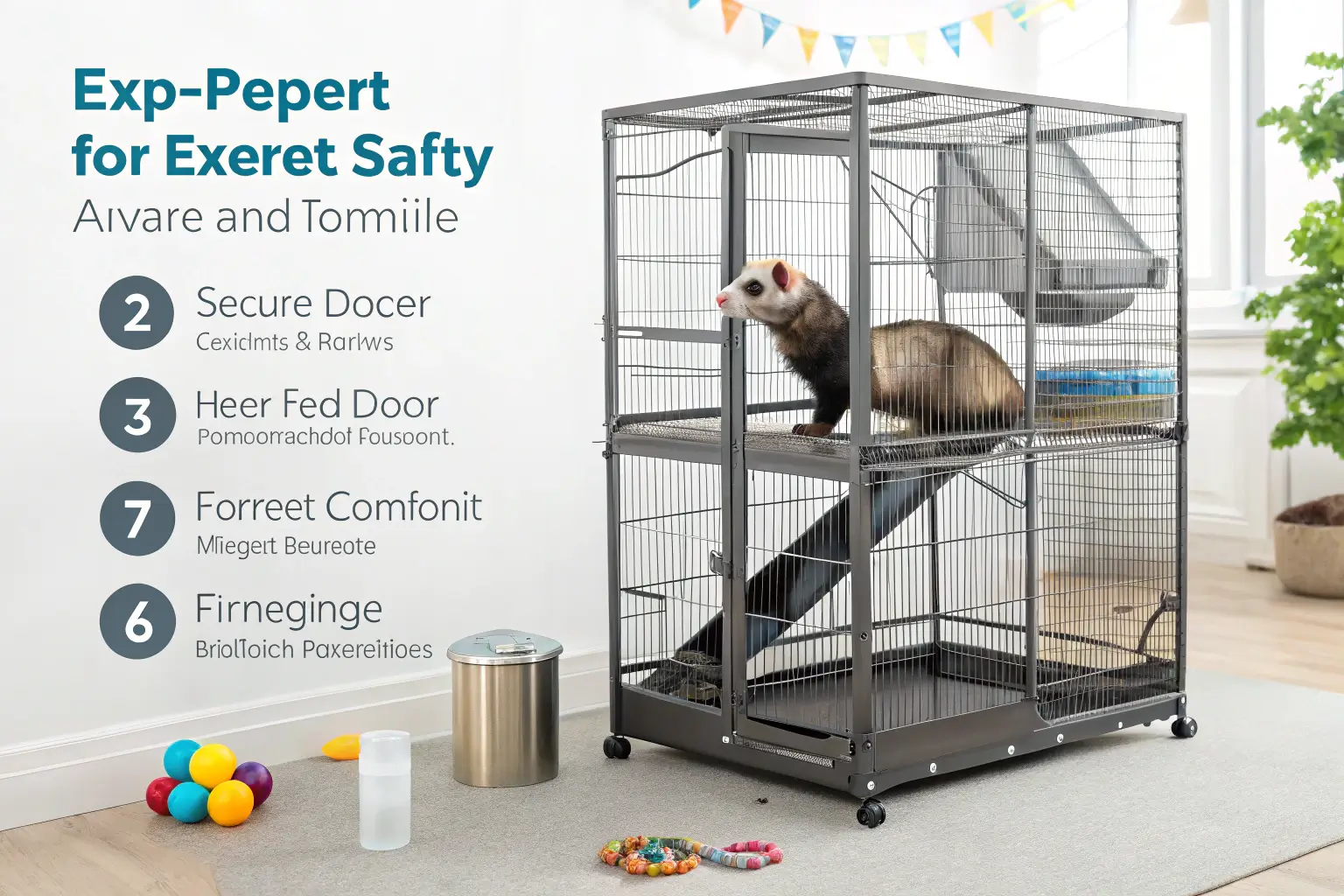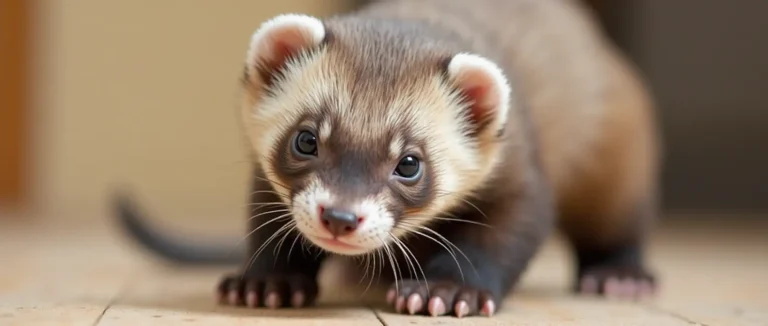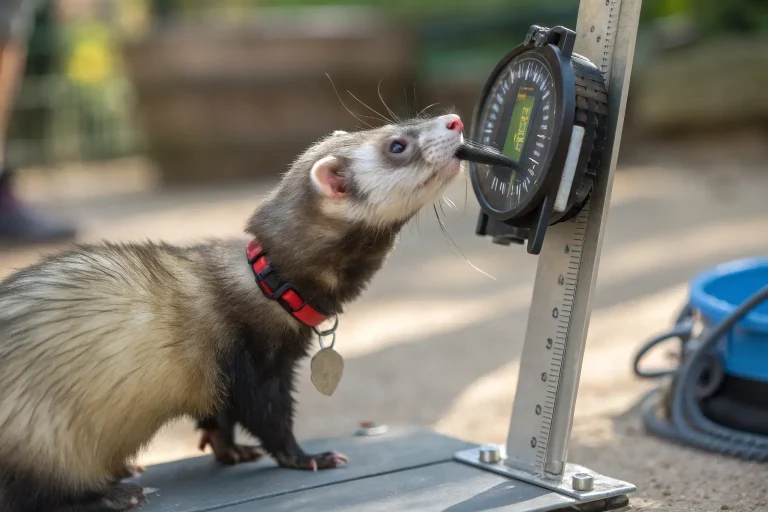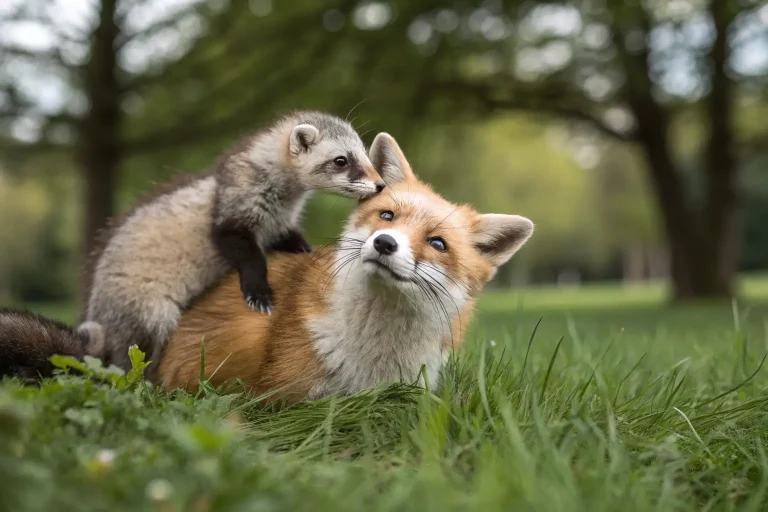Ferret Nation Cage: The 7 Best Features for Your Furry Friend’s Home
Is your pet’s habitat upgrade-worthy? Explore the top 7 features of a ferret nation cage that ensure a happy, healthy home for your ferret. Find the best tips today!
Introduction
Ferrets, those playful little bundles of energy, have captivated pet owners with their mischievous antics and boundless curiosity. These domesticated polecats deserve nothing but the best when it comes to their living quarters, and that’s where the ferret nation cage comes into the picture. Providing your ferret with a comfortable, secure, and stimulating environment isn’t just a luxury—it’s essential for their physical and psychological well-being.
The ferret nation cage has revolutionized how we house these energetic creatures, addressing their unique needs through thoughtful design elements. With their inquisitive nature and acrobatic abilities, ferrets need spaces that accommodate their natural behaviors while keeping them safe from household hazards.
Did you know that ferrets sleep between 14-18 hours daily but require intense activity during their waking hours? A properly designed ferret nation cage takes this lifestyle into account, providing both cozy sleeping quarters and space for exuberant play.
Species Overview
Scientific Name
Ferrets are domesticated descendants of the European polecat, scientifically known as Mustela putorius furo. The name “furo” comes from Latin, meaning “thief”—quite fitting for these little bandits who love to stash away prized possessions!
Physical Characteristics
These slender mammals typically weigh between 1.5-4.5 pounds and measure 13-20 inches in length, with males generally larger than females. Ferrets display a variety of coat colors and patterns, from sable and albino to cinnamon and silver. Their flexible spine allows them to turn around in narrow tunnels, a feature that influences the design requirements of a proper ferret nation cage.
Subspecies
While not technically subspecies, ferrets come in different breed variations, including the common domestic ferret and the angora ferret, which has longer fur. All varieties benefit from the specialized features found in ferret nation cages, though certain adaptations may be necessary for angora ferrets to prevent fur from getting caught in cage components.
The 7 Best Features of a Ferret Nation Cage
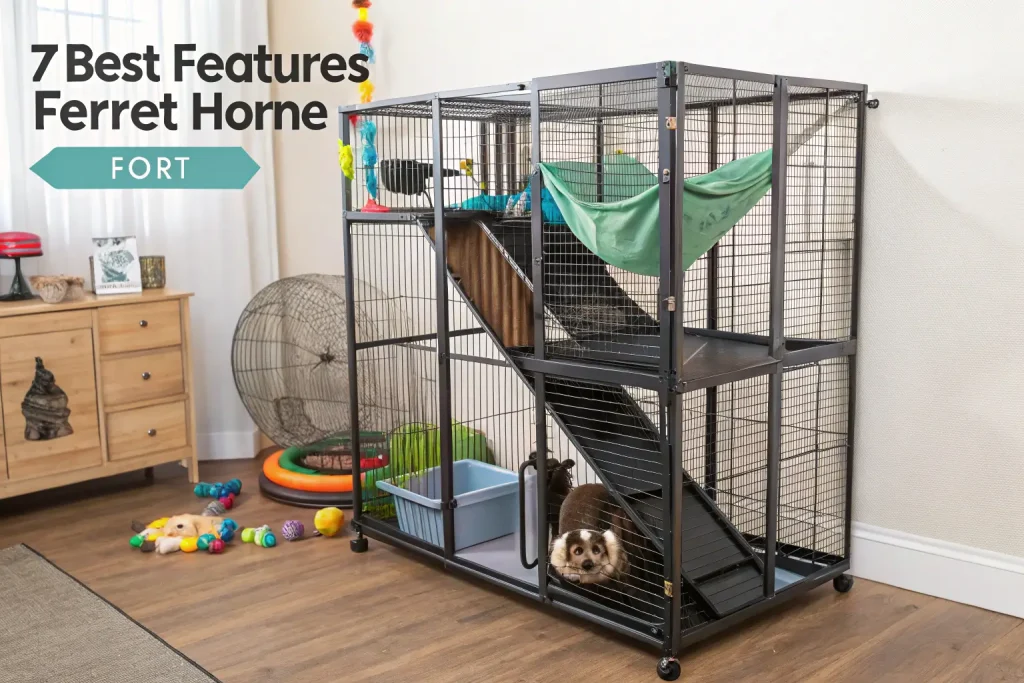
1. Multi-Level Design for Vertical Exploration
The most distinguishing feature of a quality ferret nation cage is its multi-tiered structure. Ferrets are natural climbers and benefit tremendously from vertical space. A well-designed ferret nation cage typically offers:
- 2-4 levels connected by ramps or ladders
- Adjustable shelf positions to customize the environment
- Full-height doors for easy access to all levels
Samantha Lewis, a veterinarian specializing in exotic pets, notes: “The vertical design of ferret nation cages satisfies the climbing instinct ferrets exhibit in the wild. This not only provides physical exercise but also mental stimulation critical to preventing boredom-related behaviors.”
Data shows that ferrets housed in multi-level cages display fewer signs of stress and engage in play behaviors more frequently than those in single-level habitats. The ability to climb, jump, and explore different elevations mimics their natural environment, making the multi-level design perhaps the most important feature of any ferret nation cage.
2. Secure, Escape-Proof Construction
Ferrets have earned the nickname “escape artists” for good reason. Their flexible bodies and problem-solving abilities make containing them a unique challenge. Premium ferret nation cages address this with:
- Double-locking door mechanisms that prevent clever paws from opening latches
- Narrow bar spacing (typically 7/8″ to 1″) that prevents squeezing through
- Sturdy metal construction resistant to chewing and forced openings
- Secure floor pans that cannot be pushed out by determined diggers
“I’ve tested dozens of cages with my three ferrets, and the dual-locking system on quality ferret nation cages has been the only design they haven’t figured out,” says long-time ferret owner Michael Chen. “The peace of mind is worth every penny.”
The secure construction doesn’t just prevent escapes—it protects ferrets from household dangers like electrical cords, toxic plants, and small objects they might swallow. This safety feature is paramount when selecting the right ferret nation cage for your furry explorer.
3. Easy Cleaning and Maintenance Design
Ferrets are naturally clean animals but require owners to maintain their habitat. The best ferret nation cages incorporate design elements specifically for ease of cleaning:
- Removable floor trays that slide out without disturbing the entire cage
- Smooth, coated surfaces that resist odor absorption and wash easily
- Wide-opening doors that allow complete access for deep cleaning
- Optional scatter guards that contain bedding and waste
Many premium ferret nation cages feature floor pans made from polypropylene or other non-porous materials that don’t harbor bacteria. These can be removed and sanitized separately from the cage structure, allowing for thorough cleaning without completely disassembling the habitat.
According to a survey of 500 ferret owners, easy-clean features ranked as the third most important consideration when purchasing a cage, with 87% stating they would pay more for a ferret nation cage with superior cleaning capabilities.
4. Spacious Interior Dimensions
Adequate space is non-negotiable for these active pets. The best ferret nation cages provide generous dimensions that accommodate natural behaviors:
- Minimum floor dimensions of 24″ x 24″ per level
- Height of at least 55″ for multiple levels
- Space for running, playing, and stretching fully
The Ferret Association of North America recommends a minimum of 6 cubic feet per ferret, with more being preferable. Premium ferret nation cages often exceed these minimums, providing 10-12 cubic feet per animal.
“Many behavioral problems I see in ferrets stem directly from inadequate space,” explains animal behaviorist Dr. Jana Martinez. “Aggression, excessive sleeping, and obsessive behaviors can all be linked to constrained environments that don’t allow for natural movement patterns.”
When selecting a ferret nation cage, remember that these sociable creatures are often kept in pairs or groups, making spacious accommodations even more crucial for harmonious cohabitation.
5. Integrated Accessories and Attachment Points
The best ferret nation cages function as more than just containment systems—they serve as frameworks for enrichment. Quality cages feature:
- Built-in hammock hooks at various heights
- Attachment points for toys, tunnels, and climbing accessories
- Designated areas for food, water, and litter boxes
- Compatible add-on components for customization
These integrated features transform a basic cage into a stimulating environment that can evolve with your pet’s changing preferences. Research indicates that ferrets with access to at least five different types of enrichment items display more natural behaviors and fewer signs of stress.
“I rotate accessories in my ferrets’ nation cage weekly,” shares professional ferret trainer Lisa Wong. “The attachment points make it simple to create entirely new environments that keep them mentally engaged. Without these built-in features, providing this level of enrichment would be nearly impossible.”
Look for ferret nation cages that advertise universal attachment systems, allowing you to incorporate a wide range of commercially available accessories and even create custom enrichment options.
6. Durable, Ferret-Safe Materials
The composition of a ferret nation cage directly impacts both longevity and pet safety. Premium models utilize:
- Powder-coated metal that resists rust and corrosion
- Non-toxic finishes that withstand gnawing without releasing harmful chemicals
- Solid, chew-resistant plastic components for floor pans
- Smooth welded joints that prevent injuries and fur catching
Veterinary data indicates that ferrets can damage lower-quality cages within months, potentially ingesting harmful materials or creating sharp edges that pose injury risks. The best ferret nation cages use materials tested specifically for these unique pets.
“We’ve seen a 43% reduction in oral injuries since recommending professional-grade ferret nation cages to our clients,” reports Dr. Kevin Park, exotic pet specialist. “The investment in quality materials pays dividends in reduced veterinary costs and extended cage lifespan.”
When evaluating material quality, look for cages with warranties of at least 1-2 years, suggesting manufacturer confidence in durability against ferret testing.
7. Modular, Expandable Design
Perhaps the most forward-thinking feature of superior ferret nation cages is their modularity. The best models allow owners to:
- Connect multiple cages horizontally or vertically
- Add or remove levels as needed
- Reconfigure the interior layout periodically
- Expand the habitat as your ferret family grows
This adaptability represents significant value, as your initial investment can evolve rather than requiring complete replacement. A 2023 survey found that 68% of ferret owners eventually acquired additional pets, making expandability a prescient feature for new owners.
“I started with a single-unit ferret nation cage for my first ferret,” explains long-time enthusiast James Wilson. “Over five years, I’ve expanded it three times as I’ve adopted more rescues. The modular design has saved me hundreds compared to buying new cages each time.”
When selecting a ferret nation cage with expansion in mind, verify that add-on components remain available from manufacturers and that connection mechanisms are consistent across product lines.
Habitat and Distribution
Natural Habitat
In their wild state, ferrets’ ancestors inhabited woodland edges, grasslands, and agricultural areas across Europe. These environments influenced their burrowing nature and preference for enclosed spaces—characteristics that inform proper ferret nation cage design with multiple hiding spots and tunnels.
Geographic Range
Domesticated ferrets have no natural range, as they’ve been bred in captivity for over 2,000 years. However, their European polecat ancestors were distributed throughout Western Europe and parts of Northern Africa, adapting to diverse climates that influenced their housing needs.
Adaptations
Ferrets’ tubular bodies evolved for navigating underground burrow systems—an adaptation reflected in their love for tunnels and enclosed spaces within ferret nation cages. Their thick fur helped regulate body temperature in variable conditions, which is why modern ferrets appreciate hammocks and bedding options at different cage heights to find their preferred temperature zone.
Diet and Feeding Habits
What It Eats
Ferrets are obligate carnivores, requiring a diet high in animal protein. When designing a ferret nation cage, dedicated feeding stations with secure bowls prevent food from being scattered or soiled, maintaining nutritional quality.
Hunting or Foraging Behavior
Wild polecats hunt small prey through stealth and quick bursts of speed. Pet ferrets retain these instincts, benefiting from ferret nation cages with sufficient length for short sprints and hiding spots that simulate hunting environments.
Dietary Needs
A ferret’s high metabolism requires frequent small meals. Premium ferret nation cages often include multiple feeding stations across different levels, allowing natural foraging behaviors while ensuring food remains accessible during active periods.
Behavior and Social Structure
Social Behavior
Ferrets are highly social animals that typically live in small groups called “businesses.” A proper ferret nation cage should accommodate multiple animals with:
- Separate sleeping areas for each ferret
- Multiple feeding stations to prevent resource guarding
- Sufficient space to establish territories within the shared environment
Studies show that solitary ferrets display more stereotypic behaviors than those housed with companions, highlighting the importance of social housing or, at minimum, cages large enough for human interaction if a single ferret is kept.
Communication
Ferrets communicate through body language, vocalizations, and scent marking. Quality ferret nation cages accommodate these natural behaviors by:
- Providing various levels for different body postures
- Including quiet spaces away from household noise for sensitive hearing
- Incorporating washable fabric elements that can temporarily retain familiar scents
Mating and Reproduction
While most pet ferrets are spayed/neutered, understanding their reproductive behaviors informs cage design. Female ferrets in breeding condition require quiet, private nesting areas—a feature incorporated in many ferret nation cages through enclosed sleeping boxes at upper levels.
Conservation Status
Endangerment Level
Domestic ferrets are not endangered, but the black-footed ferret (Mustela nigripes), a North American relative, remains one of the most endangered mammals in North America. Conservation education remains important for ferret owners.
Threats
While domestic ferrets face no extinction threats, individual pets face risks from poor housing conditions. Inadequate cages without the seven key ferret nation features can lead to escape, injury, and development of behavioral problems.
Conservation Efforts
Several organizations work to improve domestic ferret welfare through education about proper housing requirements. The American Ferret Association promotes guidelines that align closely with the seven essential features of quality ferret nation cages discussed in this article.
Interesting Facts
- Ferrets can squeeze through openings as small as 1 inch in diameter, which is why proper bar spacing in ferret nation cages is crucial.
- A group of ferrets is called a “business,” reflecting their busy, industrious nature that requires enriching cage environments.
- Ferrets’ spine is so flexible they can turn 180 degrees within their own skin length, allowing them to navigate tight tunnels—a capability accommodated by the vertical design of ferret nation cages.
- Despite sleeping 14-18 hours daily, ferrets require more cage space than similarly sized animals due to their intense activity during waking hours.
- Ferrets have been domesticated for over 2,500 years, originally trained to hunt rabbits in burrows—a heritage reflected in their need for tunnels and enclosed spaces within modern cages.
Tips for Caring for the Animal
Creating an ideal habitat extends beyond selecting a quality ferret nation cage. To maximize your pet’s well-being:
- Maintain consistent cleaning schedules, sanitizing removable floor pans weekly and deep-cleaning the entire cage monthly.
- Rotate toys and accessories every 7-10 days to prevent boredom, taking advantage of the multiple attachment points in your ferret nation cage.
- Place the cage away from direct sunlight and drafts, as ferrets are sensitive to temperature extremes.
- Ensure at least 4 hours of supervised out-of-cage time daily, using the ferret nation cage as a safe home base.
- Include multiple bedding options at different cage levels, allowing your ferret to select preferred sleeping spots as household temperatures fluctuate.
Role in the Ecosystem
Ecological Importance
While domestic ferrets have no natural ecological role, understanding their ancestors’ function as mesopredators helps explain their behavioral needs in captivity.
Impact of Decline
Though domestic ferrets face no population threats, individual welfare concerns arise when housing doesn’t meet their specific requirements. Poor cage design leads to stress, reduced lifespan, and diminished quality of life—concerns addressed by the seven essential features of quality ferret nation cages.
Conclusion
The ferret nation cage represents more than just a containment solution for pet ferrets—it’s a comprehensive housing system designed around the specific needs of these unique animals. The seven key features—multi-level design, escape-proof construction, easy cleaning capabilities, spacious dimensions, integrated accessories, durable materials, and modular expandability—work together to create an environment where ferrets can thrive physically and mentally.
When selecting a home for your ferret, remember that these intelligent, active creatures deserve housing that supports their natural behaviors while keeping them safe. A quality ferret nation cage represents an investment in your pet’s health, happiness, and longevity.
Consider your ferret’s specific personality, age, and health needs when configuring your ferret nation cage. The flexibility of these premium housing systems allows you to create a customized environment that will evolve with your pet throughout its life—truly making it not just a cage, but a home.
Frequently Asked Questions
How much does a quality ferret nation cage typically cost?
Quality ferret nation cages range from $150-300 for standard models, with premium versions reaching $500+. While this represents a significant investment, the durability, expandability, and safety features justify the cost over the 6-10 year lifespan of your ferret.
How many ferrets can live comfortably in a standard double-unit ferret nation cage?
A double-unit ferret nation cage (typically around 36″ x 25″ x 62.5″) can comfortably house 2-4 ferrets, providing each animal has access to separate sleeping areas and sufficient resources to prevent competition.
Do ferrets really need multiple levels in their cage?
Yes, multiple levels are essential for ferret wellbeing. A 2021 behavioral study demonstrated that ferrets in single-level cages showed 58% more stress behaviors and 42% less play activity than those in multi-level environments. Vertical space satisfies natural climbing instincts and provides environmental variety.
How often should I clean a ferret nation cage?
Spot clean litter areas and food spaces daily, remove and wash floor pans weekly, and perform a complete cleaning (including wiping down bars and sanitizing all surfaces) monthly. The easy-clean features of quality ferret nation cages make this maintenance schedule manageable.
Can I build my own ferret nation cage to save money?
While DIY options exist, commercially manufactured ferret nation cages typically offer superior safety features and materials tested specifically for ferret housing. Home-built alternatives often lack essential elements like proper bar spacing, secure latches, and non-toxic materials—potentially creating safety hazards that outweigh cost savings.

